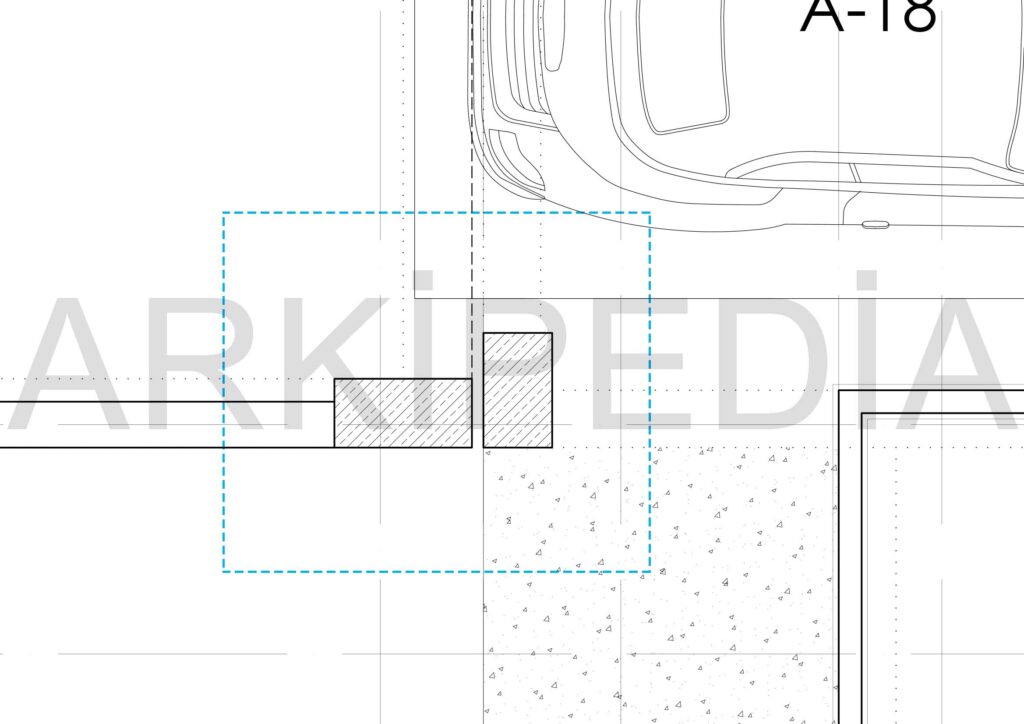What is Dilatation? Why is it done? What is its Importance?

Definition of Dilation
Dilatation is a structural design method used to absorb and control the stresses caused by thermal expansion or displacements that may occur in the structure. Materials such as reinforced concrete structures tend to expand or contract in response to changes caused by environmental factors. In particular, temperature changes, weather conditions and other environmental factors cause changes in the volume and dimensions of the materials in the structure.
Dilatation joints are specially designed gaps placed at certain intervals to control the stresses that may occur in the structure. These joints are usually made of elastic materials or metal profiles. It maintains structural integrity while allowing structural components to move.
The Importance of Dilatation in Buildings
Dilatation is considered an important design element for structures. Here are the important effects of dilatation on structures:
- Reducing Stresses: Thermal expansions or displacements occurring in structures can cause stresses in materials. These stresses can damage the structure over time and lead to cracks, deformations or other damage. Dilatation joints absorb these stresses, reducing the stresses in the structure and thus minimizing the risk of damage.
- Preservation of Structural Integrity: Dilatation joints help ensure movement between different sections in the structure. Especially in projects involving large structures or long distances, expansions or contractions that may occur due to environmental factors can be important. Dilatation joints ensure the preservation of structural integrity by keeping these movements under control.
- Compensating Deformations: Thermal expansion or displacements occurring in structures may cause deformations on the building components. These deformations can have negative effects on the structure and jeopardize structural stability. Dilatation joints balance the deformations in the structure and thus keep the structure stable.
- Building Safety: Dilatation joints play an important role in the safety of structures. Thermal expansions or displacements occurring in structures can apply serious stresses and strains to the structure. This can lead to structural weaknesses and even the risk of collapse. Dilatation joints keep these stresses under control, providing durability to the structure and creating a safe environment.
- Comfort and Aesthetics: Dilatation joints reduce disturbing noise and vibrations that may occur in the structure. Additionally, it provides an aesthetic appearance while absorbing movement between building components. Especially in large areas or long bridges, joints add an aesthetic touch to the structure and provide a pleasant appearance.
Design and Placement of Dilatation Joints
The design and placement of dilatation joints is vital to effectively control the stresses of structures due to thermal expansion or displacement. Below we will discuss some important factors to consider in the design and placement of dilatation joints.
Material Selection: Dilatation joints are generally designed using elastic materials or metal profiles. Elastic materials have a flexible structure that can adapt to thermal expansion and absorb stresses. Metal profiles provide a durable and solid structure.
Importance of Correct Placement of Joints: Joints should be strategically determined to ensure movement between building components and keep stresses under control. At this stage, structural analyses, calculations and experienced engineering knowledge should be used.
Position of Joints in Large Areas and Long Distances: Correct positioning of joints is important, especially in construction projects in large areas or long distances. Such structures can be subjected to large stresses resulting from thermal expansion or displacements. In this case, joints divide the structure, allowing movement between different regions and absorbing stresses.
Application Areas of Dilation
Dilatation has a wide range of applications in different types of structures. Below we will discuss some common applications of dilation:
- Dilatation in Concrete Floors: Concrete floors respond sensitively to thermal expansion and displacements. It is especially used on concrete floors in large areas or industrial facilities. These joints keep the stresses that may occur in the floor under control, prevent the formation of cracks and increase the durability of the floor. Additionally, dilatation joints in concrete floors enable the floor to expand smoothly and smoothly.
- Dilatation in Bridges: Bridges need dilatation joints because they are structures that are exposed to long distances and variable weather conditions. Joints in bridges allow thermal expansions and movements between different components in the bridge to be absorbed. Additionally, this method reduces vibrations in bridges, protects the bridge structure and increases sustainability. It is of great importance to ensure the safety and durability of bridge structures.
- Dilatation in Parking Lots and Large Structural Projects: Parking lots and large structural projects generally need joints because they have large areas and long distances. In these projects, these joints absorb the effects of thermal expansions and movements occurring in the structure. It is used on floors, ramps and building components in parking lots. In large structural projects, it controls the stresses that may occur in the structure and ensures structural durability. These joints ensure the longevity of the structures and minimize the risk of damage.
Innovations and Future Expansion Technologies
Structural engineering is constantly evolving and innovative solutions are sought. In this context, dilatation technologies are constantly advancing. The following developments are expected in the future:
- Smart Materials: Smart materials are materials that react sensitively to environmental influences. For example, smart polymers can respond to thermal effects and change shape. Such materials can absorb stresses more effectively by using them in joints. Thus, it can increase the durability of structures.
- Sensors and Monitoring Systems: Sensors and monitoring systems can be used to monitor stresses and deformations in dilatation joints. These systems can continuously monitor the health status of structures and be used as an early warning system. Thus, it is possible to prevent potential damage and ensure structural safety.
- Movable Joints: In addition to traditional fixed joints, movable joints may also be used more in the future. Movable joints enable freer movement between building components. Thus, it can absorb thermal expansions more effectively. In this way, deformations of structures can be better controlled and the risk of damage can be reduced.

